Kei Tua o te Pae
Kei Tua o te Pae/Assessment for Learning: Early Childhood Exemplars is a best-practice guide that will help teachers continue to improve the quality of their teaching.
The exemplars are a series of books that will help teachers to understand and strengthen children's learning. It also shows how children, parents and whānau can contribute to this assessment and ongoing learning.
We are making improvements to our download-to-print functionality. So if you want a printed copy there are PDF versions available at the bottom of the main cover page.
Belonging to wider learning communities beyond the early childhood setting
-
Te Tuhi a Manawatere
-
Group learning story
On the foreshore to the east of Howick grows a large pōhutukawa tree known by the Ngāi Tai people as “Te Tuhi a Manawatere” – the mark of Manawatere.
It is said that this ancestor came from Hawaiki. Tradition states that he did not come by canoe, but that he glided on the ripples of the waves on the back of a taniwha. He came by way of Thames and Maraetai and then to what is now known as Cockle Bay. There he landed by the large pōhutukawa tree and made his tuhi (mark) thereupon using a red ochre substance known to the Māori as karamea. The mark he made was a sign to those following that he had come that way. Hence the proverb in respect to things or persons being lost and being searched for by Ngāi Tai: “Ma te tuhi rapa a Manawatere ka kitea” (by the vivid mark of Manawatere it will be found). The pōhutukawa on this spot maintains the rich red ochre when in flower.
I copied this from The History of Howick and Pakuranga, a Howick and Districts Historical Society publication. The story was told by Anaru Makiwhara of Ngāi Tai.
This story is the one Helen told the children when sitting under the old poōhutukawa tree on one of the trips to Cockle Bay beach. When the story was finished, the children climbed onto the tree and began to search for the mark. Micah was convinced he had found the mark and to this day will insist that it is so. Helen continued with the story of the two giant lizards and the death of Manawatere that shows up in Amy’s story. The children returned to the centre and began to draw the mark.
Amy’s learning story
5 February
Teacher: Helen
On today’s beach trip to Cockle Bay, I told the children the story of Te Tuhi a Manawatere, underneath the actual pōhutukawa tree.
When we returned to the centre, Amy came up to me outside and said, “Do you know what happened to that little mark?”
I replied, “No, what?” Amy proclaimed, “Someone cut it off.”
We then went inside because Amy decided that she wanted to draw the mark and stick it on a tree in the centre and search around for it. We had all become involved in looking for Manawatere’s mark or tuhi at the beach, but we didn’t find it.
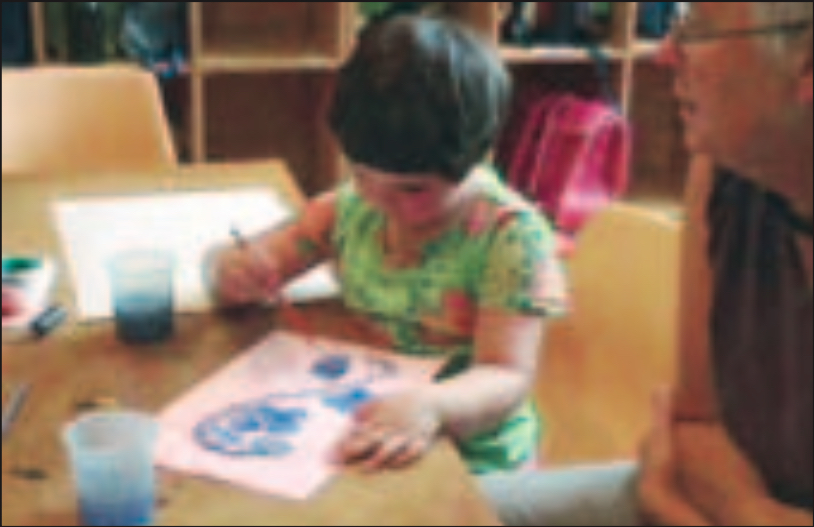
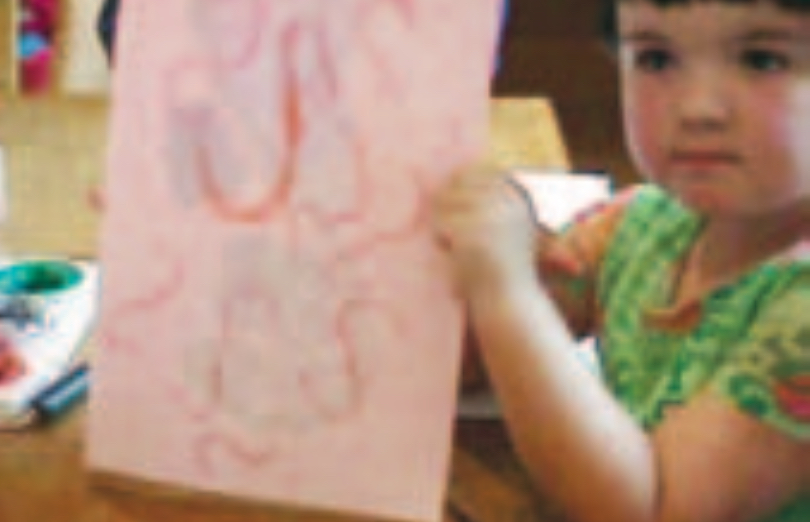
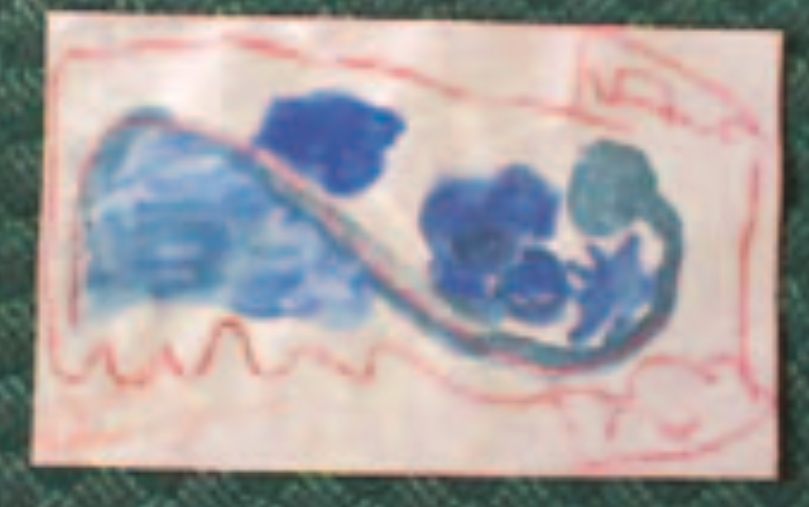
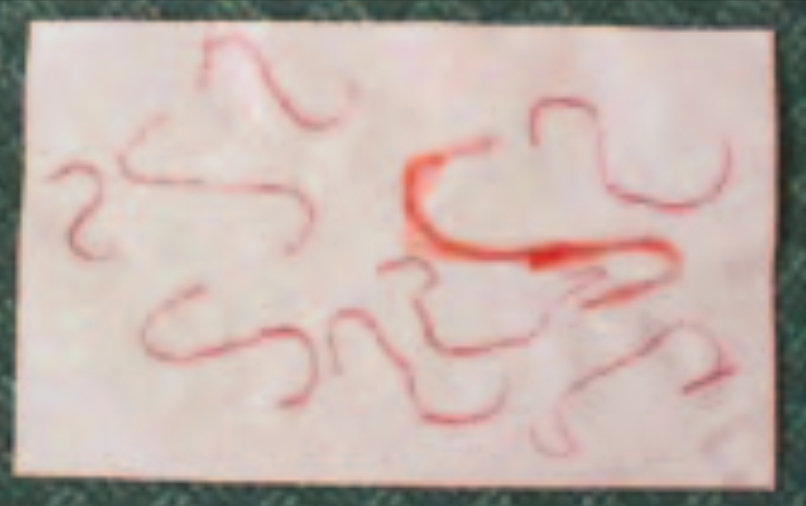
-
-
Tāwhirimatea
Child: Tia
Date: 16 August
Teacher: Grandmother
Examples or cues A Learning Story
Belonging
Mana whenuaTaking an Interest Finding an interest here – a topic, an activity, a role. Recognising the familiar, enjoying the unfamiliar. Coping with change. Tia and I were travelling out to Whitecliffs and the wind was blowing very strongly.
Tia asked, “What's that?” I told her that it was Tāwhirimatea and he was blowing very hard today.
She asked, “Where?”, meaning “Where is it? I can't see it.”
I explained that we can't see Tāwhirimatea but we can hear him and we can feel him blowing. “This is how he blows,” and I pursed my lips and blew. Tia imitated me.
I told her that we can see what he does, “Look at the trees bending. Tāwhirimatea is making that happen,” and she blew through pursed lips.
For the rest of her stay with us, whenever Tāwhirimatea was mentioned she would purse her lips. For example, when she was trying to sleep, it was blowing hard and things were banging outside her window, and even in her tired, sleepy state, when I explained that it was Tāwhirimatea, she would purse her lips and blow.
Well-being
Mana atuaBeing Involved Paying attention for a sustained period, feeling safe, trusting others. Being playful with others and/or materials. Exploration
Mana aotūroaPersisting with Difficulty Setting and choosing difficult tasks. Using a range of strategies to solve problems when ‘stuck’ (be specific). Communication
Mana reoExpressing an Idea or a Feeling In a range of ways (specify). For example: oral language, gesture, music, art, writing, using numbers and patterns, telling stories. Contribution
Mana tangataTaking Responsibility Responding to others, to stories, and imagined events, ensuring that things are fair, self-evaluating, helping others, contributing to programme. Analysis/interpretation
Tia now has the perception that Tāwhirimatea is invisible but we can hear and feel what is happening and this causes movement in the trees etc.
What next?
I have told her the traditional name for the wind and want her to become familiar with it and to learn of the many moods of the wind. Eventually she will learn the whakapapa of the realms and the links to the whole.
I would like the centre to be aware of this so staff can reinforce her knowledge of Tāwhirimatea the wind.
-
Tyler's day at the office
-
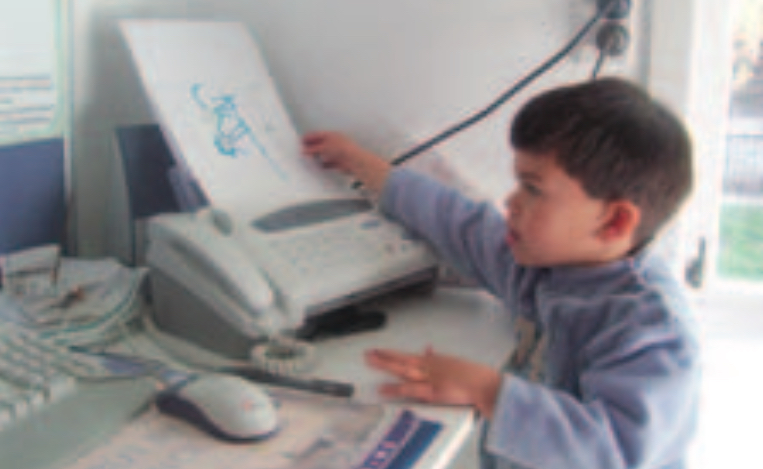
Tyler has shown huge interest in using the fax machine as a way to communicate with Mum and Dad while he is at the centre.
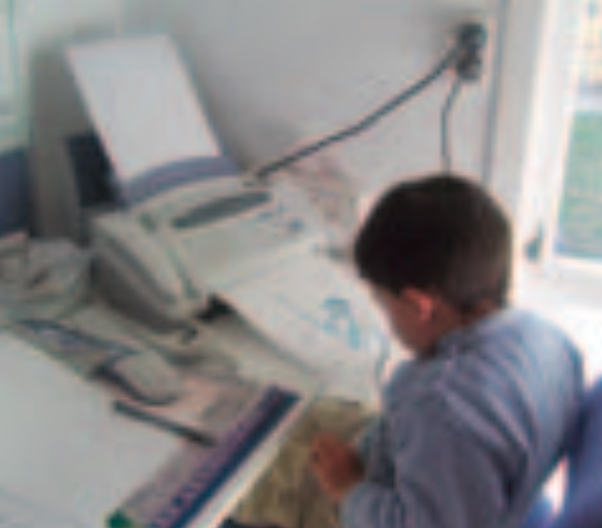
This picture seems to be upside down. OOPS. (I guess Dad still appreciated it.)
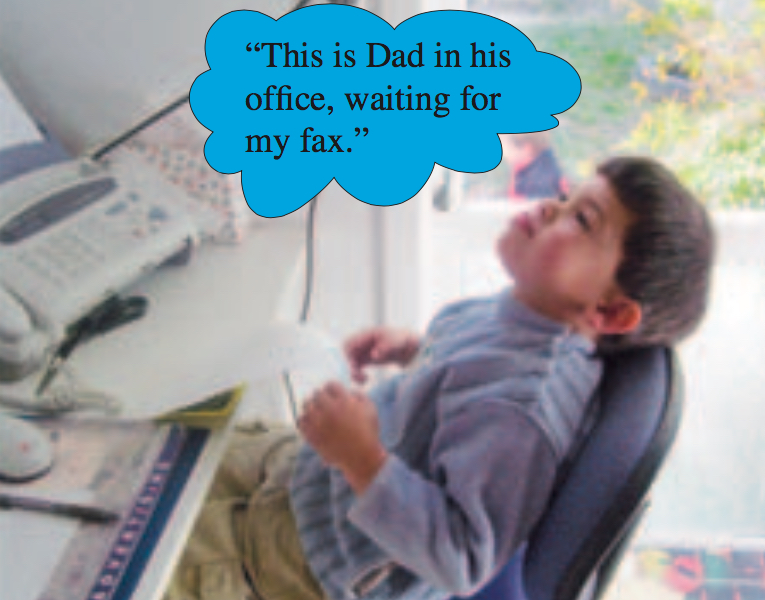
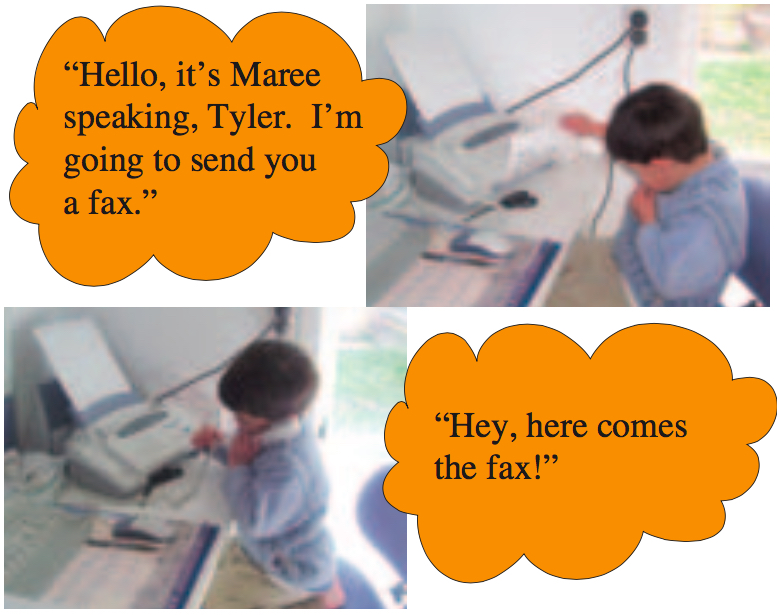
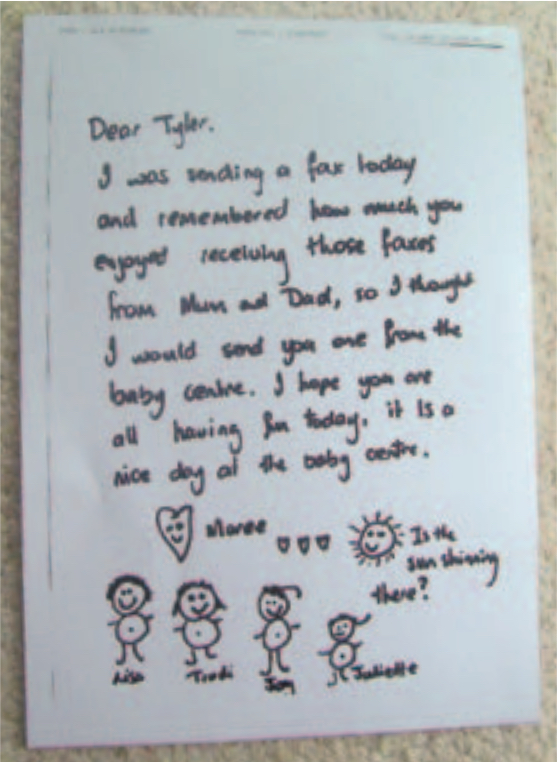
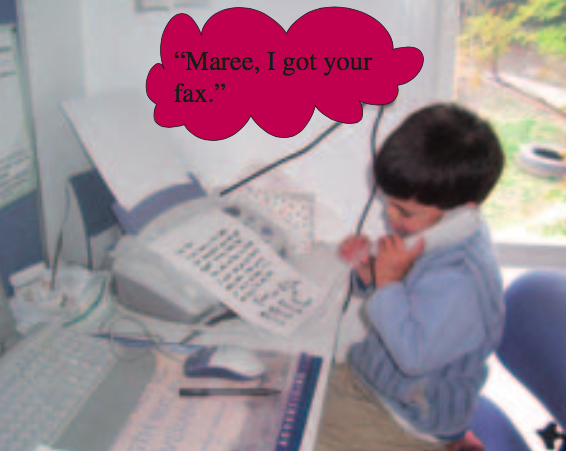
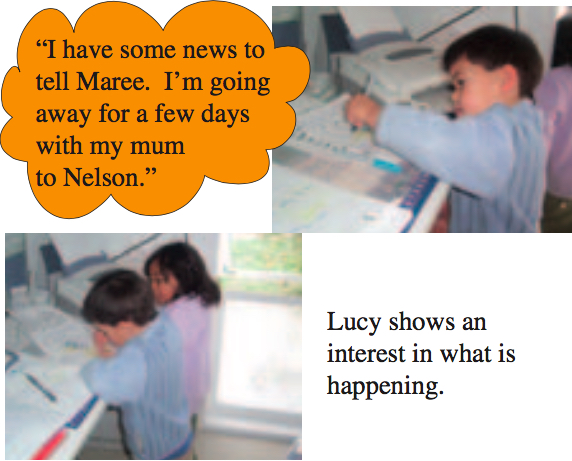
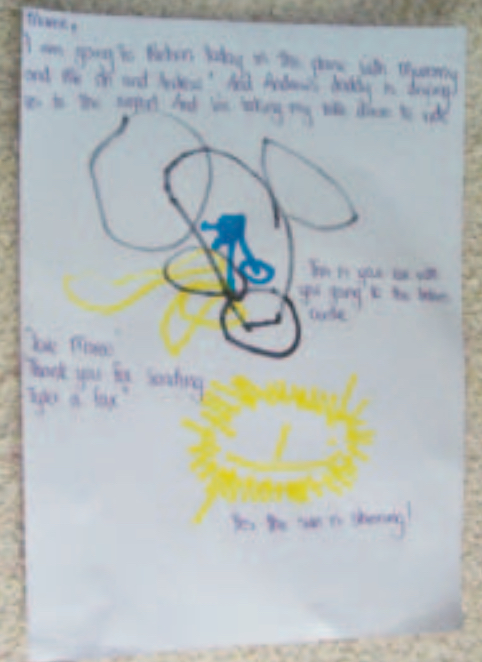
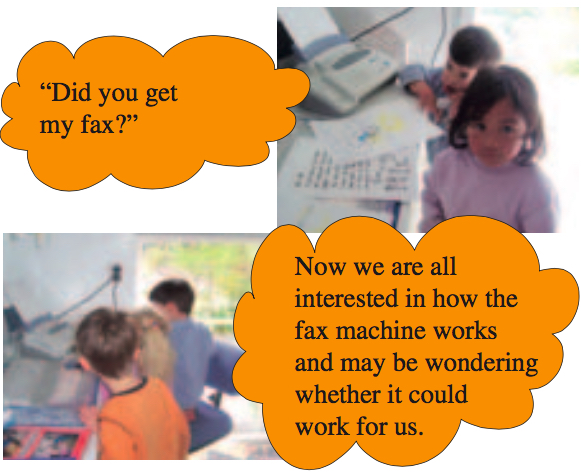
The office has never been a child-free zone. Now, it is our COMMUNICATION CENTRE.
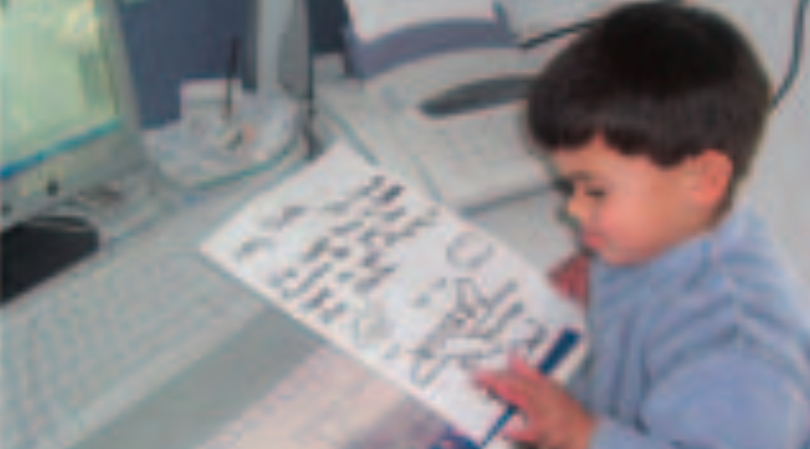
Tyler’s interest in the fax machine has introduced another aspect of communication technology and how it can be used in a learning environment.
Tyler’s faxes have:
- increased his sense of security;
- made links to the outside world;
- stimulated other children’s interest;
- created an awareness of children as competent users of technology equipment.
-
